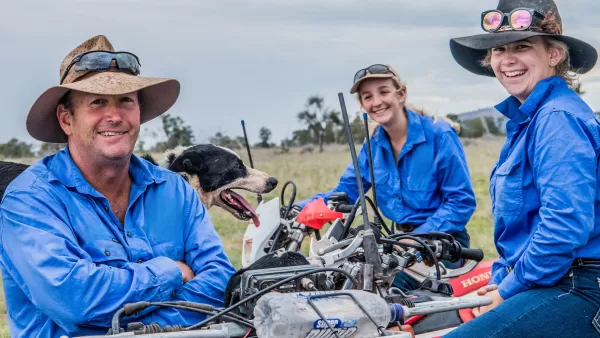Queensland Sugar Cane & Small Crop Farm
Energy Savings: 30% | Cost Savings: $6,708 | Capital Cost: $17,000 | CO2 Savings: 22.3 | Project Status: implemented
Industry:
Sugarcane
Location:
Wide Bay Burnett
Pump Type:
Centrifugal
Irrigation Type:
Drip, Travelling gun
Technology:
Variable Speed Drives
A mixed farming enterprise located in the Bundaberg region growing Sugar Cane, Sweet Potato, Pumpkin and Peanuts could benefit from a recent Energy Savers Audit. Farming requires constant decision making to maximise production and profit. Crops are often rotated due to season changes, weather variations and higher value products though sometimes the systems in place are outdated and are in need of replacement.
The farm consists of 64.8 ha and is divided into two paddocks which are irrigated using two individual pumping units that receive water from the Bundaberg Irrigation Water Supply system.
Pump site one supplies water to 38.88 ha of sugarcane and other crops through a big gun traveller and trickle irrigation which is run through gravity feed. It had a high input flow rate and is capable of sustaining systems like a low-pressure lateral move. This system currently uses mechanical valves to manage the fluctuation in supply pressure and the potential for damage to farm irrigation infrastructure. Unfortunately, this site is not suitable for Tariff 33 due to the metering requirements required for the size of the motor.
Pump site two supplies water to 25.98 ha of sugarcane and other crops, also through a travelling gun system and was connected to Tariff 33 during the audit. It too was installed prior to the development of variable frequency technology and uses mechanical valves.
Energy consumption from the two pump sites showed a total of 91,913 kWh at a cost of $22,090 during the 2019-2019 period. A recent energy audit showed how improving the current systems can lead to energy and cost savings. The recommendations explored in the audit included:
- Install two Variable Frequency Drives (VFD) to existing irrigation systems.
- Install 30kW Solar PV to pump one.
Table 1. Energy savings from audit recommendations
| Recommendations | Annual Energy Savings (kWh) | Annual Cost Savings ($) | Emission Savings (tCO2-e) | Capital Cost ($) | Payback Period (years) |
| Install VFD in two pumps | 27,530 | 6,708 | 22.3 | 17,000 | 2.7 |
| Solar Pump | 36,609 | 5,981 | 29.7 | 42,682 | 7.1 |
| Total | 64,139 | 12,689 | 52 | 59,682 | 4.7 |
Energy demand at pump one will decline as the attached VFD will value add the benefits of available incoming pressure, efficiently manage factors of water delivery fluctuation and lower pressure operation which will reduce the impact of pipeline capacity constraints due to varying pressure in the SunWater scheme. The issues of demand spike at start-up which historically causes fuse failure requiring Ergon intervention will also be resolved.
The combination of these factors will reduce energy demand and improve the potential for productivity improvement. The addition of solar PV will further reduce energy demand and provide an income offset from surplus generation with 41,797kWh expected to feed into the grid.
Pump two is currently being choked back to reduce the pressure and match the travelling gun and trickle irrigator requirements. This means that in the instance of trickle irrigation the choke back effect could mean that internal pump pressure could be as much as 60% higher than that being released to the distribution system. The end result of this operation is that the pump motor is constantly working under load. The VFD will solve this issue and reduce the energy demand.
The farmer proceeded with the installation of the VFD at both pumps, with potential energy consumption and costs savings of 30%, and carbon emission savings of 22.3 tCO2-e per year. Actual savings will be updated once the measurement and verification process is complete.
Table 2. Pre and post audit energy consumption, costs, and energy productivity savings
| Metric | Pre-Audit | Post-Audit | Reduction (%) |
| Energy Consumption (kWh) | 91,913 | 64,383 | 30 |
| Cost ($) | 22,090 | 15,382 | 30 |
| Energy Productivity (kWh/ha) | 1,418 | 994 | 30 |
An energy audit is a good investment
An energy audit is a great first step in moving a business towards a more efficient future by reducing energy use, costs and carbon emissions on site.
The Energy Savers Plus Extension Program was delivered by the Queensland Farmers' Federation with support and funding from the Queensland Department of Energy and Public Works.

